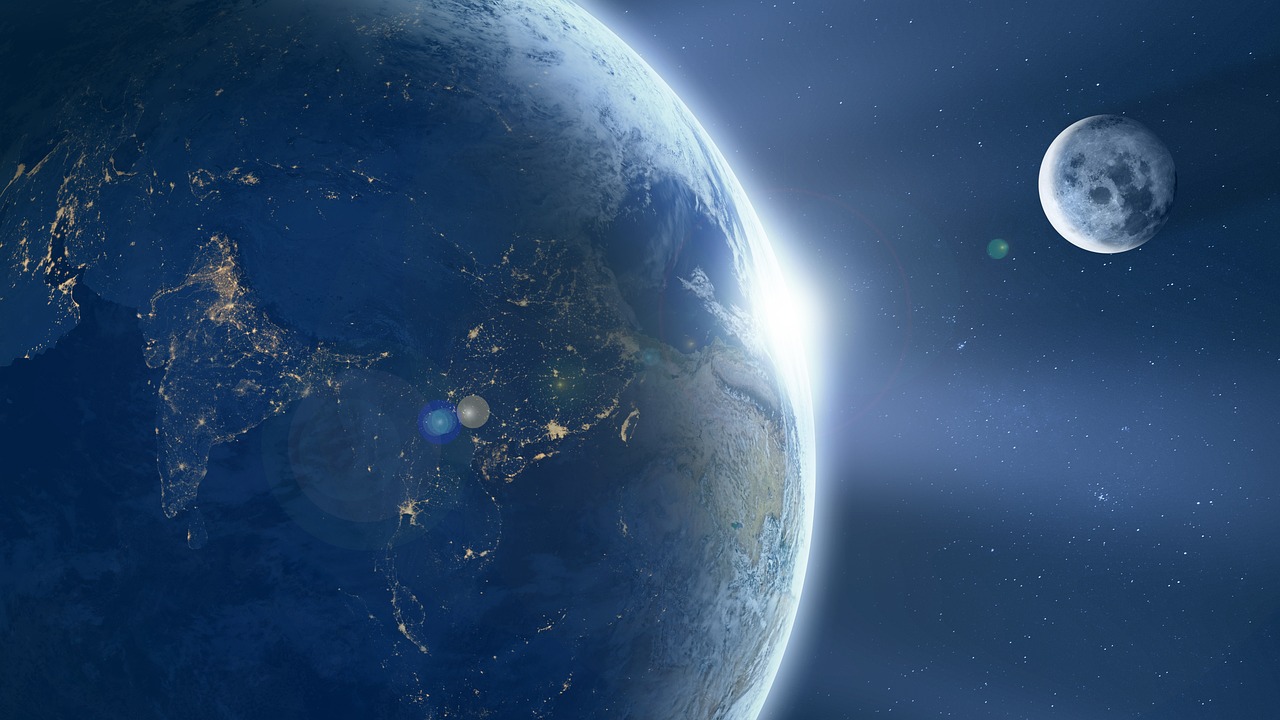🌕 The moon is moving away from Earth: what are the consequences?
Published by Cédric,
Article author: Cédric DEPOND
Source: The Conversation
Other Languages: FR, DE, ES, PT
Article author: Cédric DEPOND
Source: The Conversation
Other Languages: FR, DE, ES, PT
Follow us on Google News (click on ☆)
The question is not only how fast the Moon is moving, but also why. Astrophysicists, thanks to extremely precise measurements, have confirmed that this recession amounts to about 3.8 centimeters (approximately 1.5 inches) per year.

Pixabay illustration image
Tides at the heart of the moving away
The Moon's gravitational force does not act uniformly on Earth. The side facing the Moon experiences a slightly stronger attraction than the opposite side. This imbalance generates two bulges of water: one oriented towards the Moon, the other on the opposite side.
However, these bulges are not perfectly aligned with the Moon. Due to Earth's rotation, they are shifted forward. This offset causes a pull that acts on the natural satellite's trajectory, giving it a small extra boost.
This mechanism makes the Moon gain speed. Now, in orbital terms, more speed means a wider orbit. Thus, year after year, the Moon climbs slightly further away, while Earth loses a bit of its rotational energy.
An ever-changing Earth-Moon balance
The energy that propels the Moon into a wider orbit is thus drawn from somewhere: it comes from Earth's slowing rotation. As the Moon moves away, the length of Earth's days increases very slightly.
Geological studies confirm this. By analyzing growth rings in fossilized shells, researchers have shown that 70 million years ago, a day lasted only 23.5 hours. The Moon was closer then and the tidal effects were more pronounced.
This phenomenon does not affect our daily lives. The lengthening of an Earth day is measured in milliseconds per century. Tides, eclipses, and the lunar cycle will therefore continue to exist for millions of years to come.
A future written on a cosmic scale
If we project this process into the distant future, a particular state could emerge: Earth and the Moon could become gravitationally "locked." Each Earth rotation would then last as long as the Moon's orbit.
In such a scenario, only one hemisphere would always see the Moon in its sky, while the other would never see it. But this locking would only occur after tens of billions of years, a horizon well beyond the probable existence of our planet.
Indeed, long before that, the Sun's evolution will change the situation. In about a billion years, the star will intensify and cause the oceans to disappear, depriving the Moon of the tides that fuel its recession. Even later, as it becomes a red giant, the Sun will likely engulf Earth and its satellite.
To go further: what is a tide?
Tides are regular movements of the sea level rising and falling. They result mainly from the gravitational attraction exerted by the Moon and, to a lesser extent, by the Sun on Earth's oceans. These forces create a deformation of the water's surface, which results in areas where the sea level rises and others where it falls.
Earth's rotation plays an essential role in this phenomenon: by spinning on its axis, our planet causes the movement of these "water bulges" around the globe. It is this combined movement of gravitation and Earth's rotation that gives rise to the regular tide cycles, with two high tides and two low tides each day in most parts of the world.
However, tides are not the same everywhere. They vary according to geographical location, coastline configuration, and seabed depth. Thus, some areas experience spectacular amplitudes, like the Bay of Fundy in Canada, while others perceive only slight variations. These local differences show how much tides depend as much on the universal laws of gravitation as on the particular geography of the places.
How is the Earth-Moon distance measured?
Measuring the distance between Earth and the Moon is not a simple task: it constantly varies, because the Moon's orbit is not perfectly circular but slightly elliptical. The Moon is on average about 384,400 kilometers (approximately 238,855 miles) away from us, but this value can fluctuate by several thousand kilometers depending on its position in its orbit.
To obtain a precise measurement, scientists use a method involving sending laser beams from Earth to reflectors placed on the Moon's surface by the Apollo and Lunokhod missions. The time taken by the light to make the round trip allows the distance to be calculated with an accuracy on the order of a centimeter.
Other methods also exist, such as analyzing the Moon's orbital motion or measurements by satellites. These complementary techniques help confirm the results obtained and better understand the variations in the Earth-Moon distance over time. Thanks to them, we know that the Moon is moving very slowly away from Earth, by about 3.8 centimeters (approximately 1.5 inches) per year.